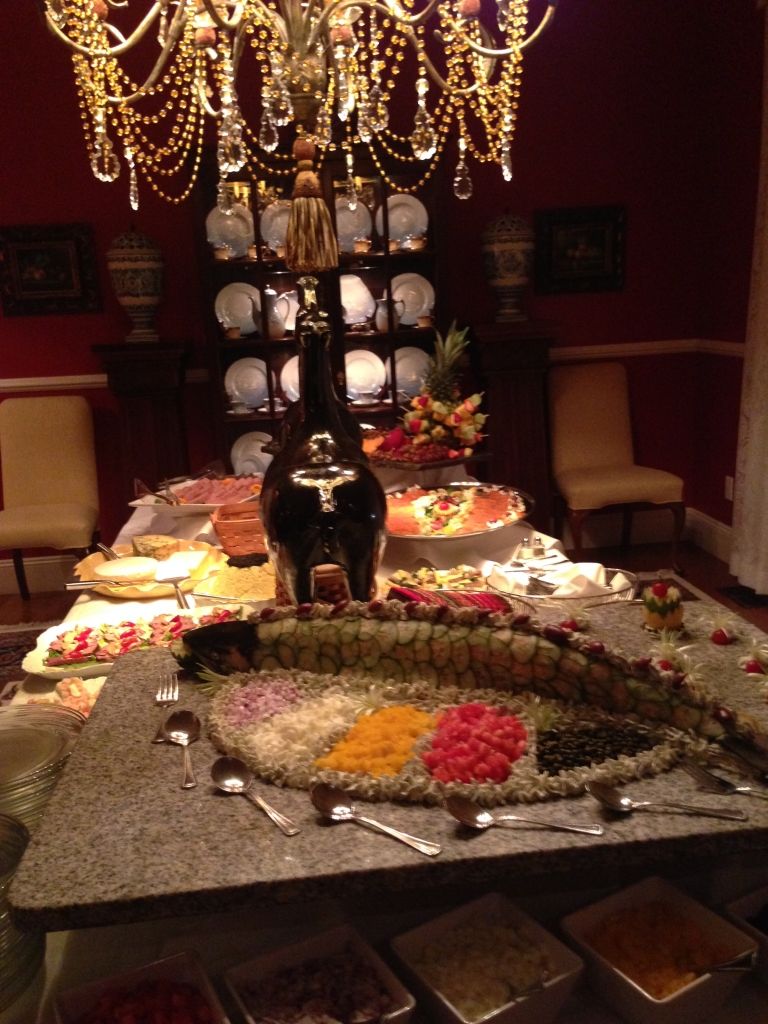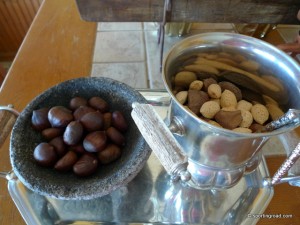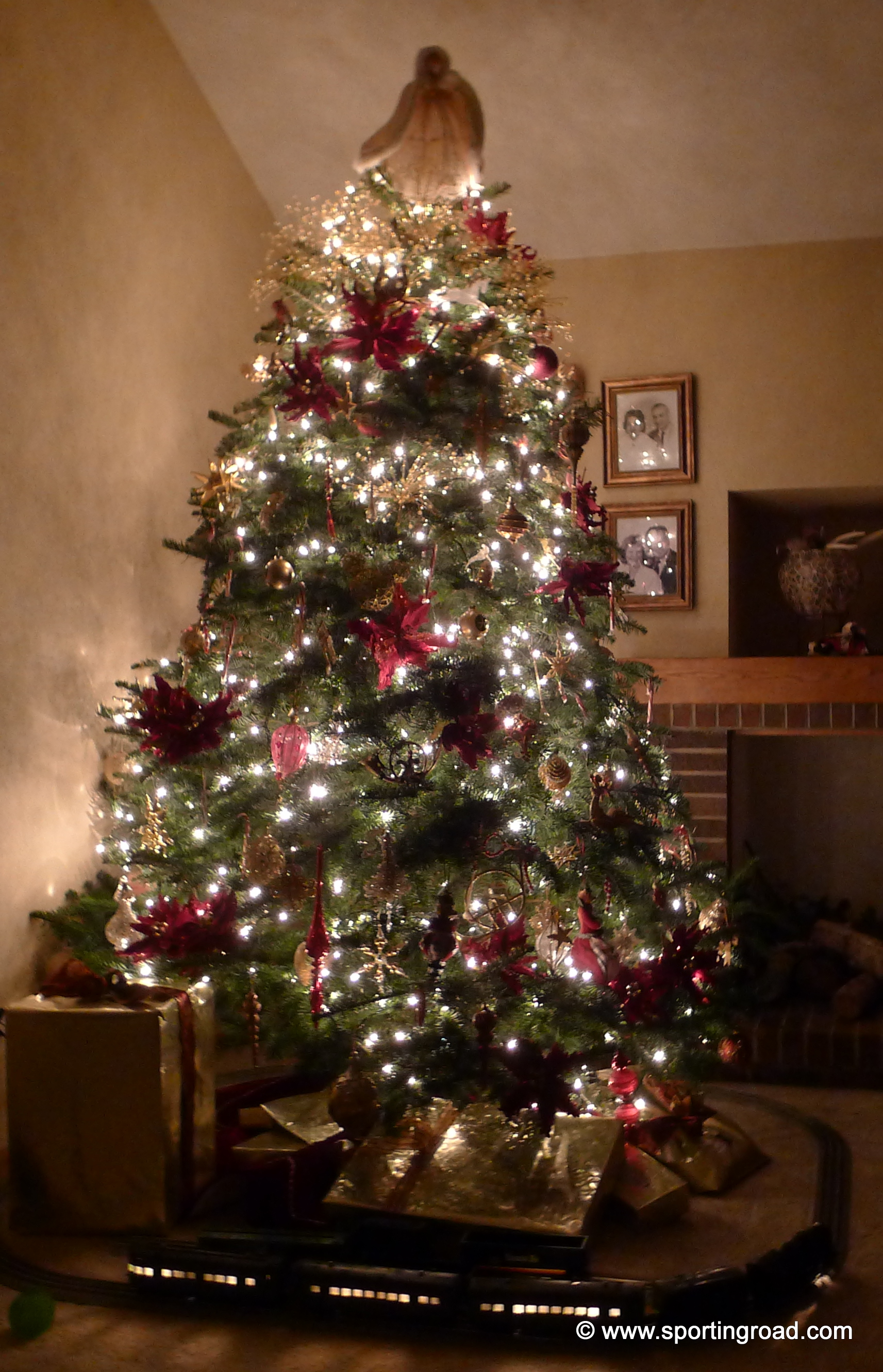 On a few occasions while I was growing up, my grandmother used to take me to Midnight Mass on Christmas. Christmas Mass is a time to celebrate family and generosity. It is a period marked by ritualized family reunions, gifts and candy for children, gifts to be shared with family, friends, and less fortunate, and le Réveillon.
On a few occasions while I was growing up, my grandmother used to take me to Midnight Mass on Christmas. Christmas Mass is a time to celebrate family and generosity. It is a period marked by ritualized family reunions, gifts and candy for children, gifts to be shared with family, friends, and less fortunate, and le Réveillon.
As in America, most begin to celebrate Christmas on the 24th and 25th of December. However, in eastern and northern France, the Christmas season begins on 6 December, la fête de Saint Nicolas, and in some provinces la fête des Rois is one the most important holidays of the Christmas season.
In Lyon, 8 December is la Fête de lumières, when Lyonnais pay homage to the virgin Mary by putting candles in their windows to light up the city. This always reminds of the traditions of New Mexicans who adorn their Albuquerque and Santa Fe walkways, churches and homes each holiday season with luminarias, which date back more than 300 years. These Spanish villages along the Rio Grande displayed Christmas lanterns, called luminarias,to welcome the Christ child into the world. A traditional luminaria is a brown paper bag, which has been folded at the top, filled will a couple of cups of sand and a votive candle, although we prefer the modern versions for the convenience and safety, which are plastic replicas of the bags and filled with strings of electric lights.
French children put their shoes in front of the fireplace, in the hopes that Père Noël (aka Papa Noël) will fill them with gifts, which we observe with riding boots, which hold far more and don’t require purchasing like Christmas stockings do in most American households. Ok, truth be told, we do both. But the French tradition is to put candy, fruit, nuts, and small toys in them which we do in the boots, and which may also be placed on the Christmas tree overnight, which always has to be a real fir-tree in our house and we like the Noble firs. In some regions there’s also Père Fouettard who gives out spankings to bad children (sort of the equivalent of Santa Claus giving coal to the naughty). We haven’t implemented this tradition yet, but see the reasoning in it if you find yourself in this boat.
We love the fact that the French have passed a law for everything, which is great for lawyers, and in 1962, a law was passed decreeing that all letters written to Santa would responded to with a postcard. Here, we now have iPad applications which do that, which is the American way of making everything a capitalistic opportunity, which is also as a good of a way as a bureaucratic solution.
While less and less numbers of French attend la Messe de Minuit on Christmas Eve, it is still an important part of Christmas for many families and one which my other grandparents very much enjoyed. So, I got Christmas in two places, what can be better for a child? This is followed by a huge feast, called le Réveillon (meaning to wake up or revive). Le Réveillon is a symbolic awakening to the meaning of Christ’s birth and is the culinary high point of the season, which may be enjoyed at home or in a restaurant, but was always at home for us featuring both a turkey and a goose.
Throughout the French Christmas season, there are special traditional desserts, including la bûche de Noël or a yule log-shaped cake made of chocolate and chestnuts, representative of the special wood log burned from Christmas Eve to Ne
w Year’s Day in the Périgord, which is a holdover from a pagan Gaul celebration. La Galette des Rois (on Epiphany) is a round cake, cut into pieces and distributed by a child, known as le petit roi or l’enfant soleil, hiding under the table. Whoever finds la fève – the charm hidden inside – is King or Queen and can choose a partner, host the next party, or at least buy the next year’s cake.
We quite like all of these traditions, which many have adopted on Mardi Gras instead in the States for the King’s Cake tradition, at least. Whenever you celebrate it, it is a good tradition.
On the streets of France from Paris to Bordeaux the scent of roasted chestnuts fill the air as vendors serve up roasted chestnuts at Christmas time, in little twisted paper cones. They are eaten out of hand and any left overs (good luck finding any) can be used in meat or vegetable dishes, which we particularly like to make them on Christmas Eve, for this reason, and then add any leftovers to the finished corn bread stuffing on the next day for Christmas, just prior to serving.
ROASTED CHESTNUTS OVER AN OPEN FIRE

- 2 lb. fresh chestnuts
- dash of brandy
Using a sharp knife, cut a shallow X into the flat side of each chestnut. Working in batches, arrange on a long-handled skillet for the fireplace. Roast the chestnuts on indirect heat over the fire, tossing frequently, until the skin has darkened, and the nut meat is cooked through 15-20 minutes. Allow to cool a couple of minutes, transfer to a warm serving bowl and allow guests to peel off the skins.


Leave A Comment
You must be logged in to post a comment.